Best Native Plants for Pensacola
BY AUSTIN GEIGER | APRIL 10TH, 2023 | FLORIDA, LANDSCAPING, PENSACOLAIn the wild areas of Pensacola, such as Big Lagoon State Park, native plants abound. These plants are an important part of any local ecosystem. They’re a great help to pollinators and feed your area’s critters. They’re also beautiful low-maintenance options for your landscaping if you’re looking for some new blooms to fill your outdoor space with. Here’s a list of some of the best native plants for Pensacola to help you pick out your new flora:
- 10 Native Plants for Your Pensacola Yard
- 1. American Beautyberry
- 2. Black-Eyed Susan
- 3. Blue Mistflower
- 4. Coral Honeysuckle
- 5. Coreopsis
- 6. Longleaf Pine
- 7. Red Buckeye
- 8. Scaleleaf Aster
- 9. Scarlet Sage
- 10. Seaside Goldenrod
- How to Choose Native Plants for Your Pensacola Landscape
- FAQ About Native Pensacola Plants
- Where to Find Native Plants in Pensacola
10 Native Plants for Your Pensacola Yard
1. American Beautyberry (Callicarpa americana)
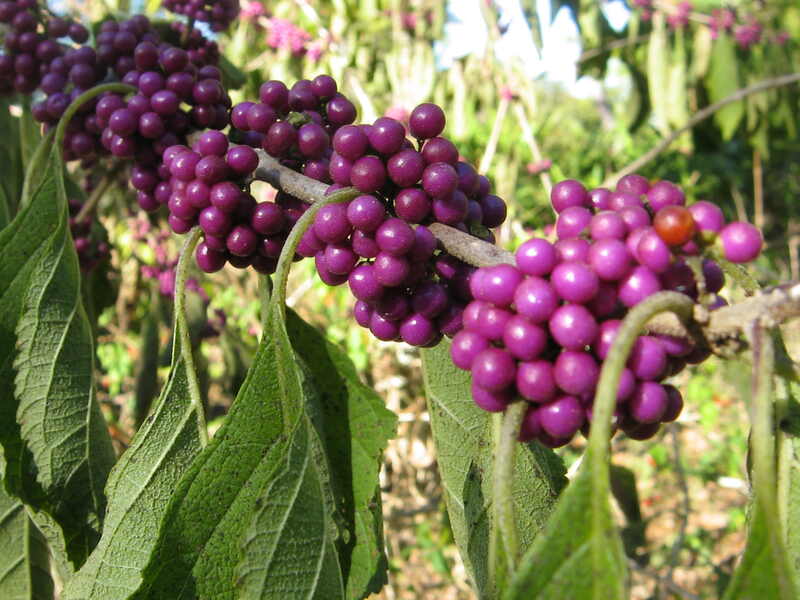
Photo Credit: Korall / Wikimedia Commons / CC BY-SA 3.0
American beautyberry is a shrub that certainly lives up to its name. Its light green leaves and vivid purple berries are a sight to behold, making it a great choice for beds or as an accent plant. Beautyberry requires very little water, prefers low sun, and is low-maintenance. It does best in soil with either loam or sandy composition.
Plant Type: Shrub
USDA Hardiness Zone: 7 to 11
Sun: Full sun to partial shade
Soil: Loam, sand
Duration: Deciduous perennial
Fragrance: Citrus
Bloom Time: Summer
Water Needs: Low, requires only 1 inch per week
Mature Height: 4 to 8 feet
Potential Hazards: None, the berries it grows are edible for humans and animals
Maintenance Needs: Low, prune in late winter to make it look better next year
2. Black-Eyed Susan (Rudbeckia hirta)
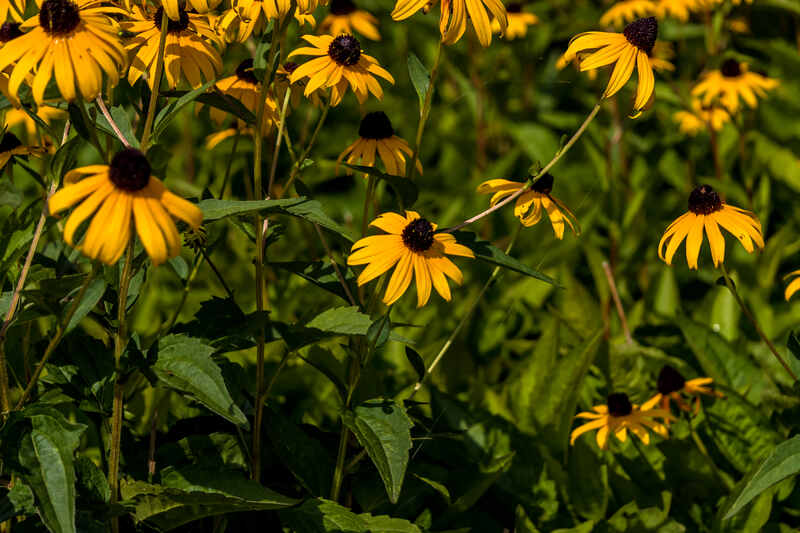
Photo Credit: Michel Rathwell / Wikimedia Commons / CC BY 2.0
Black-eyed Susan is a beautiful Florida native wildflower with bright yellow leaves and a dark brown center that gives it its name. It’s highly attractive to pollinators but is resistant to deer and looks great in beds, pots, or planters. It has some drought tolerance but does require its fair share of water.
Black-eyed Susan prefers full sun and tolerates a wide variety of soil types. If you plant this flower, be warned that it can become invasive if conditions are too ideal, so keep an eye on it and dig up the underground rhizomes it spreads by if it starts pushing out your other plants.
Plant Type: Flower
USDA Hardiness Zone: 3 to 9
Sun: Full sun
Soil: Clay, sandy, loam, acidic, moist, well-drained
Duration: Can be perennial, biennial, or annual depending on growing conditions
Fragrance: Sweet
Bloom Time: Spring to early autumn
Water Needs: Medium. Has moderate drought tolerance
Mature Height: 1 to 3 feet
Maintenance Needs: Low
3. Blue Mistflower (Conoclinium coelestinum)
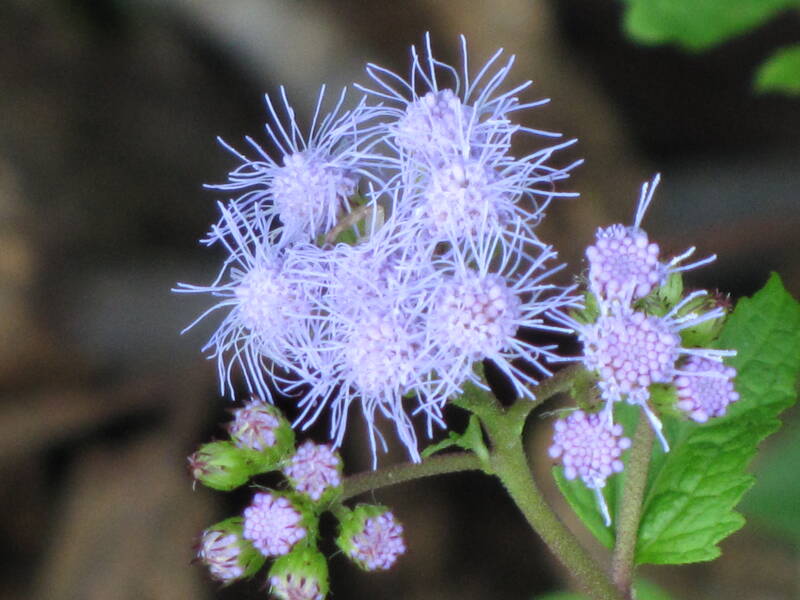
Photo Credit: Linda M Morgan / Wikimedia Commons / CC BY-SA 3.0
Blue mistflower is another beautiful Florida native wildflower, one that grows small purple clumping flowers. It can handle some shade and tolerates a few different soil types, and requires a moderate amount of water while still being drought tolerant.
Blue mistflower is resistant to deer and is very attractive to pollinators thanks to the abundance of nectar its flowers hide. This is another flower that can spread, so take care not to let it take over.
Plant Type: Wildflower
USDA Hardiness Zone: 5 to 10
Sun: Full to partial sun
Soil: Clay, loam, sand, moist, well-drained
Duration: Perennial
Fragrance: Floral
Bloom Time: Mid summer to autumn
Water Needs: Moderate, is drought-tolerant
Mature Height: 1 to 3 feet
Maintenance Needs: Low
4. Coral Honeysuckle (Lonicera sempervirens)
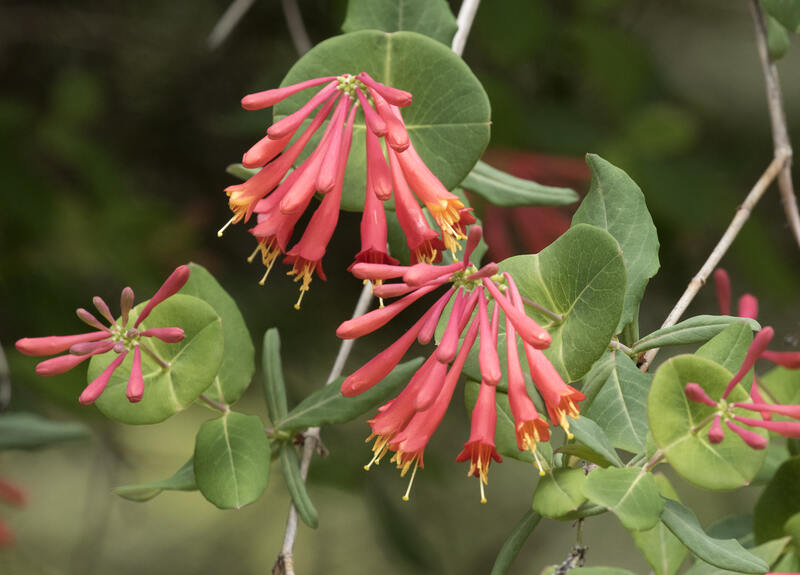
Photo Credit: Zeynel Cebeci / Wikimedia Commons / CC BY-SA 4.0
Coral honeysuckle is a flowering vine with lovely tube-shaped red flowers that attract all kinds of pollinators, hummingbirds in particular. It has moderate water needs but is drought tolerant once established, and it can tolerate some shade along with a variety of different soils.
Coral honeysuckle makes a great addition to trellises, or can grow around a pole or on a wall. You can even grow them around posts on outdoor structures, like gazebos, to give them that extra je ne sais quoi. Keep in mind, however, that this vine’s flowers are poisonous, so be very careful around them.
Plant Type: Vine
USDA Hardiness Zone: 4 to 9
Sun: Full sun to partial shade
Soil: Clay, sand, loam, acidic, well-drained
Duration: Semi-evergreen perennial
Fragrance: Sweet
Bloom Time: Spring, early summer, autumn
Water Needs: Medium
Mature Height: 15 to 20 feet
Potential Hazards: Flowers are toxic to both animals and humans, berries are inedible
Maintenance Needs: Low
5. Coreopsis (Coreopsis verticillata)
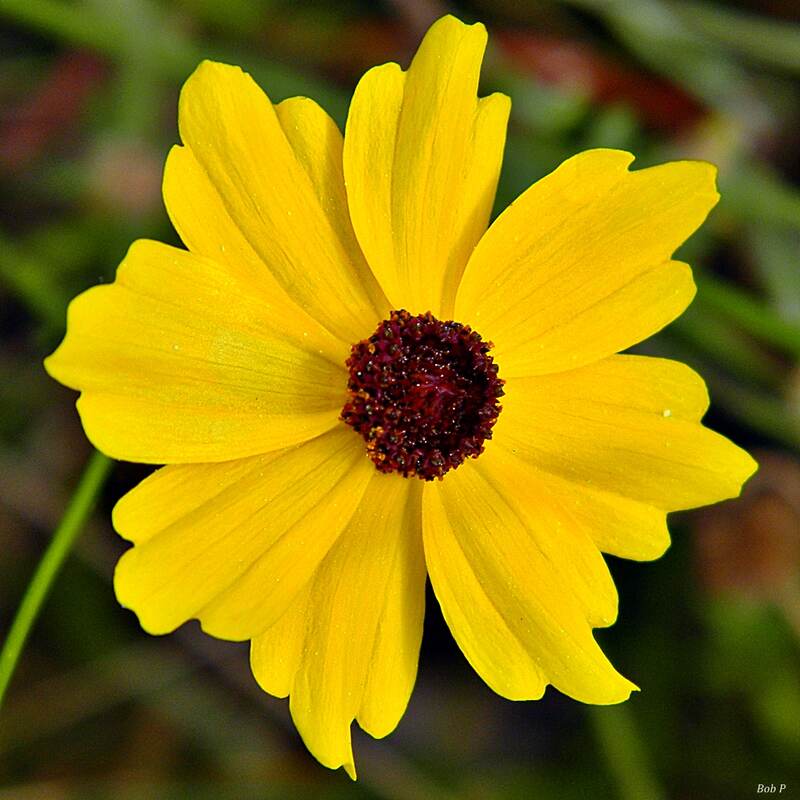
Photo Credit: Bob Peterson / Wikimedia Commons / CC BY-SA 2.0
If you want a native plant for your Pensacola landscape, there’s none better than Florida’s state wildflower. Also known as tickseed, Coreopsis is a wonderful yellow flower that loves the sun and tolerates many different soil types. Some varieties also have stunning red or orange colors closer to the center. It requires a bit more maintenance than some of the others on this list, but is well worth it.
Plant Type: Wildflower
USDA Hardiness Zone: 3 to 10
Sun: Full sun
Soil: Chalk, loam, sand, moist, well-drained
Duration: Can be annual or perennial
Fragrance: Sweet
Bloom Time: Summer to autumn
Water Needs: Low to moderate
Mature Height: 6 inches to 4 feet
Potential Hazards: None, has medicinal properties
Maintenance Needs: Low to moderate
6. Longleaf Pine (Pinus palustris)
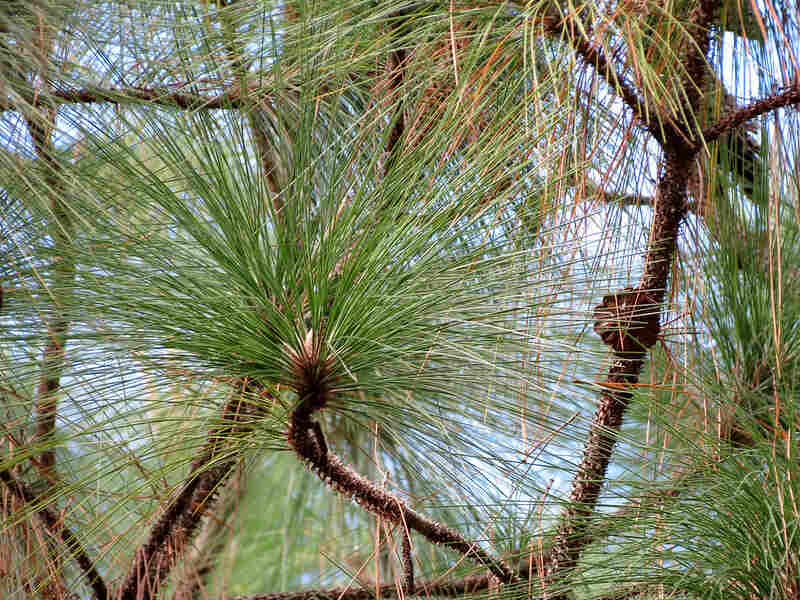
Photo Credit: Katja Schluz / Flickr / CC BY 2.0
Longleaf pine is a species of pine tree native to Florida. Unlike many other pines, it grows tall and thin, up to 100 feet tall, with most of its branches towards the top of the tree. For this reason, it makes for a great centerpiece for your outdoor space. Longleaf pine is low-maintenance, requires little water, and prefers full sun.
If you do choose this tree for your property, don’t make the decision lightly. Longleaf pine is classified as an endangered species. While you can have one on your property, you cannot cut it down and will need a special permit to relocate it should you decide you no longer want it, so make sure you do your research and understand state and local laws surrounding endangered species before installing a longleaf pine.
Plant Type: Tree
USDA Hardiness Zone: 7 to 10
Sun: Full sun
Soil: Clay, loam, sand, acidic or neutral, well-drained
Duration: Evergreen
Fragrance: Pine
Bloom Time: Year-round
Water Needs: Low
Mature Height: 80 to 100 feet
Potential Hazards: Pollen and nuts can set off allergies
Maintenance Needs: Low
7. Red Buckeye (Aesculus pavia)
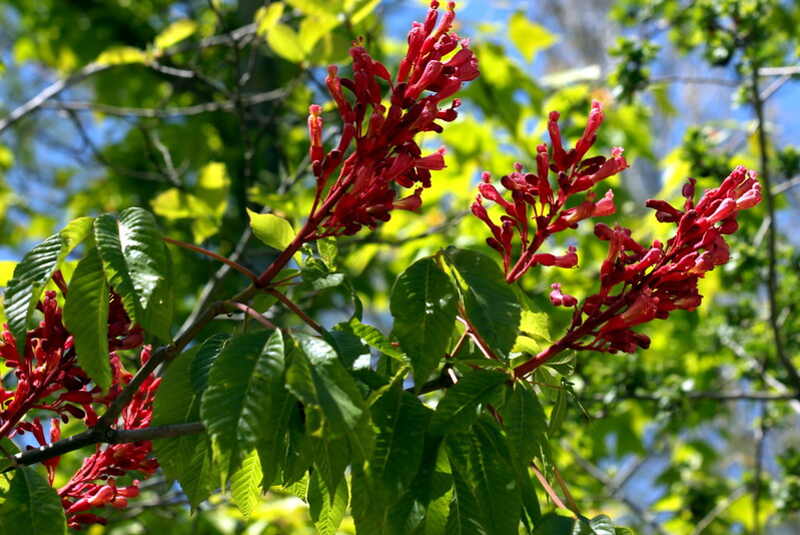
Photo Credit: manuel m. v. / Flickr / CC BY 2.0
Red buckeye is a beautiful shrub with tube-shaped red flowers that make it very attractive to hummingbirds and other pollinators. It’s low-maintenance, tolerates some shade, and requires a moderate amount of water. Thanks to its height, which is tall enough to sometimes be considered a small tree, it makes a great centerpiece for your landscape or can be used as an accent plant.
If you choose red buckeye, keep in mind that several parts of the plant are highly poisonous.
Plant Type: Shrub
USDA Hardiness Zone: 5 to 9
Sun: Full to partial sun
Soil: Well-drained, tolerates a wide variety of soil types
Duration: Deciduous
Fragrance: None
Bloom Time: Mid spring to summer
Water Needs: Low to moderate
Mature Height: 12 to 15 feet
Potential Hazards: Seeds, leaves, and sprouts are toxic to both humans and animals when ingested
Maintenance Needs: Low
8. Scaleleaf Aster (Symphyotrichum adnatum)
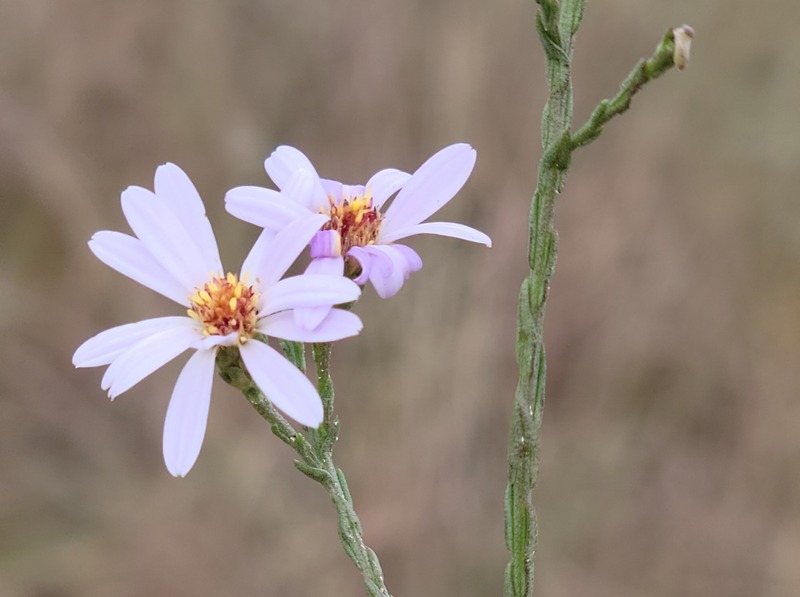
Photo Credit: Jay Horn / Wikimedia Commons / CC BY 4.0
Scaleleaf aster is another stunning Florida native wildflower, one with pale purple to white flowers and a beautiful yellow center that make it very attractive to pollinators, bees especially. It can tolerate some shade and is very low-maintenance and drought-tolerant. This aster goes great in flower beds and containers and makes for a wonderful accent plant.
Plant Type: Wildflower
USDA Hardiness Zone: 8 to 11
Sun: Full to partial sun
Soil: Sandy, chalky, moist, well-drained soil
Duration: Perennial
Bloom Time: Late autumn to early winter
Water Needs: Low, does not require supplemental water once established
Mature Height: 1 to 2 feet
Maintenance Needs: Low
9. Scarlet Sage (Salvia coccinea)
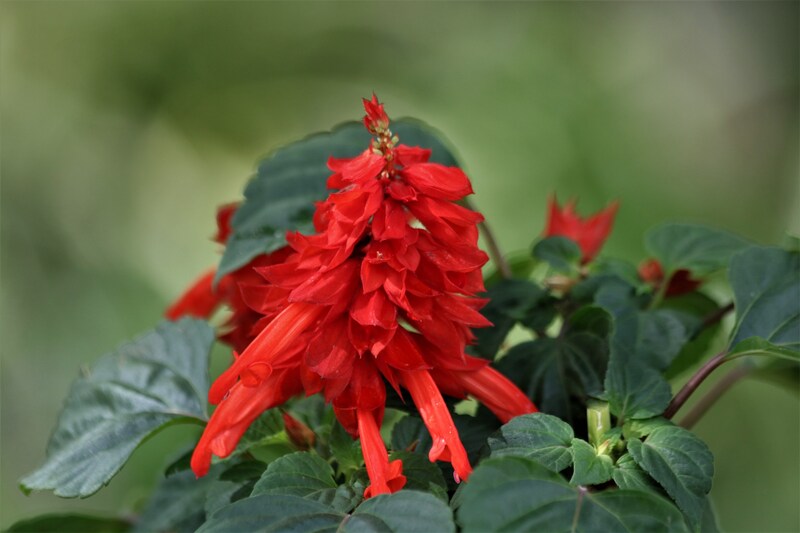
Photo Credit: PublicDomainPictures
Scarlet sage, also known as blood sage or tropical sage, is a Florida native wildflower and the only sage native to the US with red flowers, which attract many different kinds of pollinators. It has moderate water needs and is low-maintenance. Scarlet sage can be either an annual or a perennial, and typically blooms in June.
Scarlet sage is a great accent plant that goes well in flower beds or containers. It’s somewhat sensitive to salt, so make sure it has protection from salt spray and coastal winds. If you’re expecting a heavy storm or hurricane, take them inside so the salt doesn’t harm the plant.
Plant Type: Wildflower
USDA Hardiness Zone: 8 to 11
Sun: Full to partial sun
Soil: Loam, sand, moist, well-drained
Duration: Can be annual or perennial
Fragrance: Sage
Bloom Time: Mid summer to autumn
Water Needs: Moderate
Mature Height: 2 to 3 feet
Maintenance Needs: Low
10. Seaside Goldenrod (Solidago sempervirens)
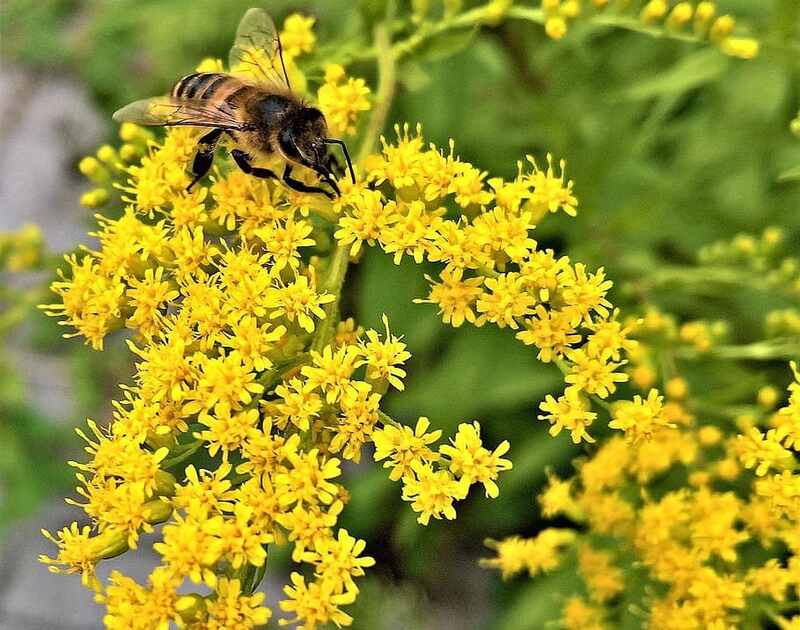
Photo Credit: Pxfuel
Seaside goldenrod is another Florida native wildflower, one with beautiful small yellow clumping flowers that attract both birds and pollinators. It prefers full sun, loamy or sandy soil, and is low-maintenance and drought tolerant. As its name implies, seaside goldenrod is very salt tolerant, making it a good choice for coastal areas like Pensacola specifically.
Plant Type: Wildflower
USDA Hardiness Zone: 3 to 10
Sun: Full sun
Soil: Loam, sand, moist, well-drained
Duration: Perennial
Fragrance: Sweet
Bloom Time: Late summer to autumn
Water Needs: Low to moderate
Mature Height: 2 to 6 feet
Maintenance Needs: Low
How to Choose Native Plants for Your Pensacola Yard
With so many choices available, it can be difficult to pick out a few native plants for your landscape. Thankfully, it’s fairly easy to narrow them down. Take note of the conditions in your landscape and choose plants that are well-suited for it. If you get a great deal of sun, for example, pick native plants that do best in full sun, which shouldn’t be hard in Florida.
You also need to examine your soil and determine what composition it has, how well it drains, and its pH balance. All of these things are important for a plant, native or no, so make sure you pick plants that can thrive in the type of soil in your landscape.
Pensacola is in USDA Hardiness Zone 9a. This means that its average minimum yearly temperature ranges from 20 to 25 degrees Fahrenheit. The Hardiness Zones are used to determine how low of a temperature that plants can thrive in any given area.
Every plant on this list can comfortably tolerate Zone 9a, and Pensacola’s other native plants are very likely to be the same way.
FAQ About Native Pensacola Plants
Some native plants are poisonous. You’ll need to take certain precautions when keeping these species in your outdoor space to avoid harm to yourself or others. Some examples include certain passionflower species, magnolia trees, and milkweed.
There’s also the possibility for certain native plants to become invasive. If conditions are too ideal, some native plants can push out the others in your garden, so you’ll need to keep a close eye on them to ensure they don’t take over your landscape.
With the right precautions, yes. Most poisonous plants are harmless unless ingested. Some, however, can cause irritation of the skin if you touch them. Here are some tips to help keep you and others safe when keeping poisonous plants:
- Keep any poisonous species separate from all other plants in your garden. If you’d like, you can also create a barrier around them or wall them off.
- Have warning signs that clearly indicate that a plant is poisonous.
- Understand how to recognize and treat afflictions caused by the poisonous plants you keep.
- Do not allow pets or small children in your garden if you have poisonous plants.
- Wear protective gear at all times when handling poisonous plants.
Many are, but not all. Native plants generally require less maintenance than non-native ones since they’re already in the habitats they’re best suited for. Just like any other kind of plant, however, their levels of maintenance vary.
Not particularly. Every plant needs time to establish itself in a new area, and native ones are no different. Keep an eye on any plant you introduce to your landscape and care for it well until the establishment period has come and gone. How long this takes will vary depending on the kind of plant and exact species.
Where to Find Native Plants in Pensacola
When it comes to discovering new native plants to grow in your North Florida landscape, there’s no better place to look than the wilderness. Take a walk through areas like Pensacola’s Scenic Bay Bluffs Preserve and take note of some of the flora you see so that you can plant some in your backyard.
It’s important to remember, however, that you should never take plants directly from the wild. Doing so can upset a fragile ecosystem. Instead, purchase them from qualified retailers recommended by the Florida Native Plant Society.
If you need help caring for your landscape, connect with a local lawn care pro who can maintain the yard’s turfgrass, edging, and hedges.
Main Image Credit: Black-eyed Susan / Joost J. Bakker IJmuiden / Flickr / CC BY 2.0